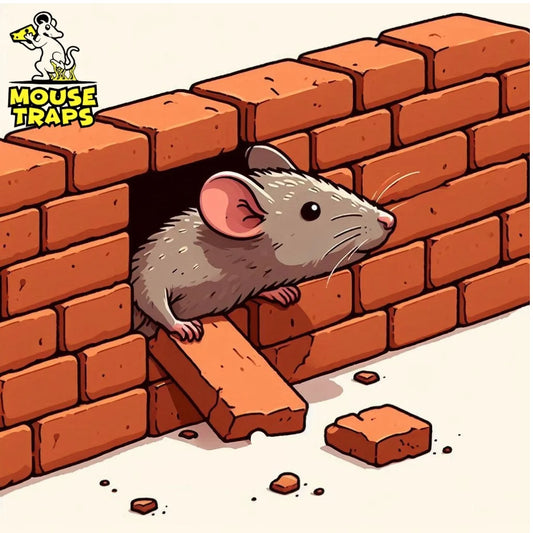Introduction:
Rats causing trouble, in the countryside of the UK can be a problem for people living there and farmers. These tough little critters can breed wreck property spread illnesses and make things unclean. Yet by following a plan and using the equipment it is feasible to manage rat issues effectively and stop them from coming back. This in depth manual will delve into techniques, advice and resources for addressing rat infestations, in parts of the UK.
Steps to take to deal with rat infestation:
Identifying the Problem:
One of the steps to deal with a rat issue is to determine how widespread it is. Begin by inspecting your property for signs such, as droppings, gnaw marks, footprints, nests or tunnels. Be mindful of spots where rats could potentially seek refuge, such, as attics, basements, crawl spaces and outdoor sheds. It is essential to pinpoint the origin of the infestation in order to develop a plan to address it.

Removing Food Sources:
Rats are attracted to areas with easily accessible food sources. To deter them, securely store food in metal or glass containers with tight-fitting lids. This includes both human and pet food. Additionally, regularly clean up spilled food, crumbs, and food waste, both indoors and outdoors. By eliminating sources of food you can make your property less appealing, to rats. Prevent them from moving.

Sealing Entry Points:
Rats can enter buildings through small gaps and cracks in walls, floors, and foundations. Inspect the exterior of your property for any openings and seal them using materials such as metal flashing, concrete, wire mesh, or expanding foam. Make sure to inspect the areas, near doors, windows, vents, pipes and utility lines. By sealing off these entry points you can keep rats from getting into your house or buildings.

Using Traps:
Using traps is a kind and efficient method to manage rat numbers. Different kinds of traps are accessible such, as traps, live traps and electronic traps. Snap traps are traditional and often highly effective, while live traps allow you to capture rats without harming them, so you can release them elsewhere. Electronic traps offer a hands-free approach and can be effective in killing rats quickly. Place traps in areas where rats are active, such as along walls or near entry points, and check them regularly.

Live Mouse Traps:
Live mouse traps are designed to capture mice alive so they can be released elsewhere. These traps typically consist of a small, enclosed box or cage with one or more entry points and a mechanism that closes the door or lid once a mouse enters.
-
Bait Placement: To attract mice into the trap, bait such as peanut butter, cheese, or seeds is placed inside the trap near the entrance. The scent of the bait lures the mouse into the trap.
-
Trigger Mechanism: When the mouse enters the trap to access the bait, it triggers a mechanism that causes the door or lid to close behind it, trapping the mouse inside.
-
Safe Capture: Live traps are designed to capture mice without harming them. The trap provides a secure and humane way to contain the mouse until it can be released.
-
Release: Once a mouse has been captured, the trap can be taken to a suitable location away from the property, such as a wooded area or field, and the mouse can be released unharmed.
-
Reset: After releasing the captured mouse, the trap can be reset with fresh bait to continue capturing any remaining mice.
- Humane: Live mouse traps allow you to capture mice without harming them, making them a humane option for rodent control.
- Reusable: Many live traps are reusable, allowing you to catch multiple mice without needing to purchase additional traps.
- Safe: Live traps are safe to use around children and pets since they do not involve the use of toxic chemicals or mechanical devices.
- Easy Release: Live traps typically feature a door or mechanism that allows you to release captured mice safely and without direct contact.
- Environmentally Friendly: Live traps do not pose a risk to the environment since they do not involve the use of pesticides or other harmful substances.

Sticky Glue Mouse Traps:
Sticky glue mouse traps, also known as glue boards or glue traps, are designed to capture mice by trapping them on a sticky adhesive surface.
-
Placement: Glue traps are typically flat boards or trays coated with a strong adhesive. They are strategically positioned in locations frequented by mice like close, to walls, entryways or spots showing mouse presence.
-
Baiting: While some glue traps come pre-baited with attractants, such as food scents, others may require the addition of bait to attract mice to the trap.
-
Capture: When a mouse steps onto the sticky surface of the trap, it becomes firmly adhered to the adhesive. The strong adhesive prevents the mouse from escaping.
-
Incapacitation: Once trapped on the glue board, the mouse may struggle to free itself, but its movements only serve to further entangle it in the adhesive.
-
Disposal: Glue traps are typically disposable and designed for single-use. Once a mouse has been captured, the entire trap can be disposed of in accordance with local regulations.
Benefits of Sticky Glue Mouse Traps:
- Effective: Sticky glue traps are highly effective at capturing mice, as the strong adhesive prevents them from escaping.
- Easy to Use: Sticky glue traps are simple to set up and require minimal effort to use. Just peel off the protective cover and place them in areas where mice are active.
- Non-Toxic: Sticky glue traps do not contain any toxic chemicals, making them safe to use around children and pets.
- Disposable: Sticky glue traps are disposable, making cleanup quick and easy. Once a trap has captured a mouse, you can simply discard it and replace it with a new one.
- Versatile: Sticky glue traps can be placed in various locations, including along walls, near entry points, and in areas where mice are known to travel.

Using Rodenticides:
If the infestation is severe, consider using rodenticides, or rat poisons, to control rat populations. Choose rodenticides that are specifically labeled for use against rats, and follow the manufacturer's instructions carefully. Place bait stations or bait blocks in areas where rats are active, ensuring they are inaccessible to children, pets, and non-target wildlife. Regularly monitor and replenish bait stations as needed.

Maintaining Hygiene:
Keeping your property clean and tidy is essential for preventing and controlling rat infestations. Remove clutter, debris, and potential hiding places where rats can nest and breed. Keep outdoor areas well-maintained by trimming vegetation, mowing grass, and disposing of yard waste promptly. Indoors, practice good sanitation habits by regularly cleaning floors, countertops, and other surfaces to eliminate food residues and odors that can attract rats.

Seeking Professional Help:
If your efforts to control the rat infestation on your own are unsuccessful, or if the infestation is severe, consider seeking assistance from a professional pest control service. Professionals, in pest management possess the expertise know how and specialized tools required to handle rat issues with safety and effectiveness. They are capable of performing an assessment of your premises pinpointing the underlying reasons, for the infestation and applying methods to eliminate the presence of rats.

Preventing Future Infestations:
Once you've successfully dealt with the current rat infestation, take proactive measures to prevent future occurrences. Make sure to keep up with cleanliness practices take care of your surroundings and check for any signs of rats, on a basis. Think about putting in place measures for lasting prevention, like setting up barriers that rats can't get through using deterrents and signing up for pest control services to manage rat numbers gradually.

Conclusion:
Handling rat problems, in the countryside of the United Kingdom calls for a strategy and appropriate equipment. By pinpointing the origin of the infestation eliminating food supplies closing off entryways utilizing traps and rodenticides upholding cleanliness reaching out to experts when necessary and putting measures in place you can efficiently manage rat numbers. Maintain your premises free, from these unwelcome pests. Remember to prioritize safety when dealing with pests and to always follow the manufacturer's instructions when using traps or rodenticides. By staying determined and putting in the effort you can effectively deal with rat problems. Create a rat setting in your countryside residence or farm.




